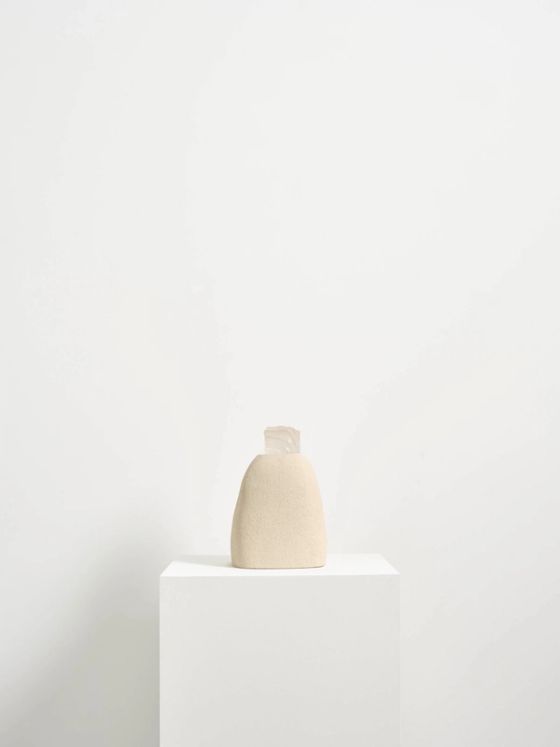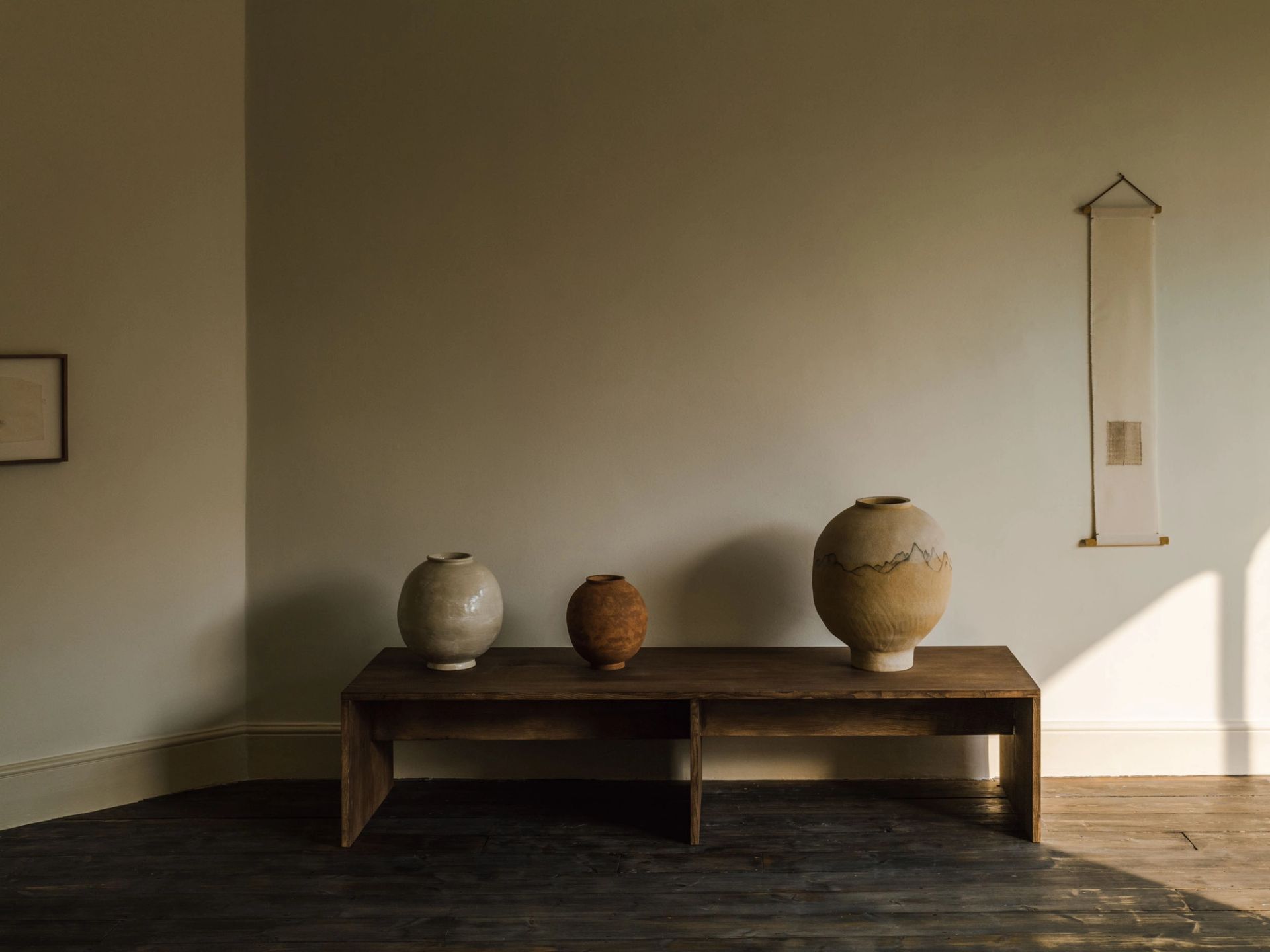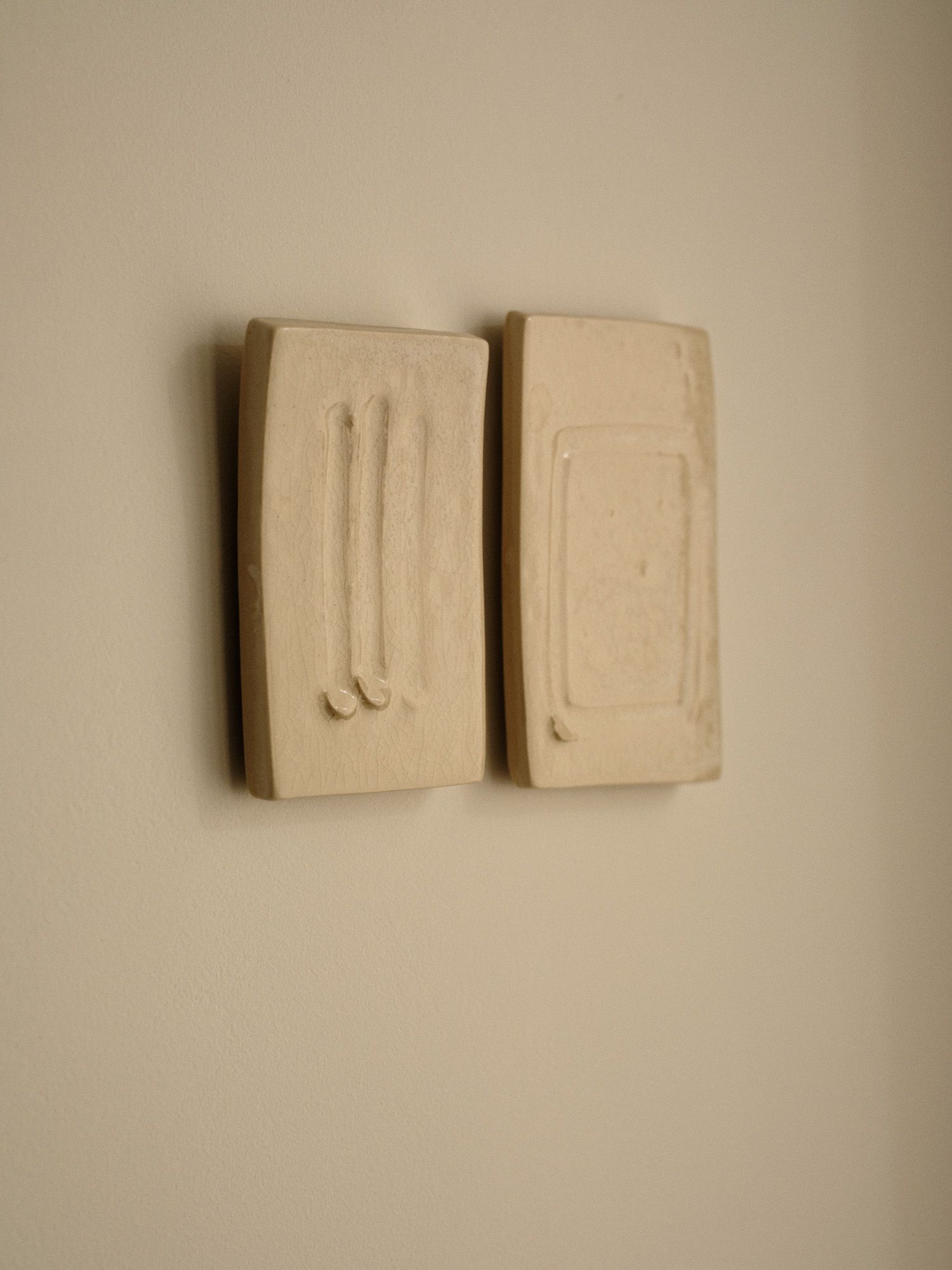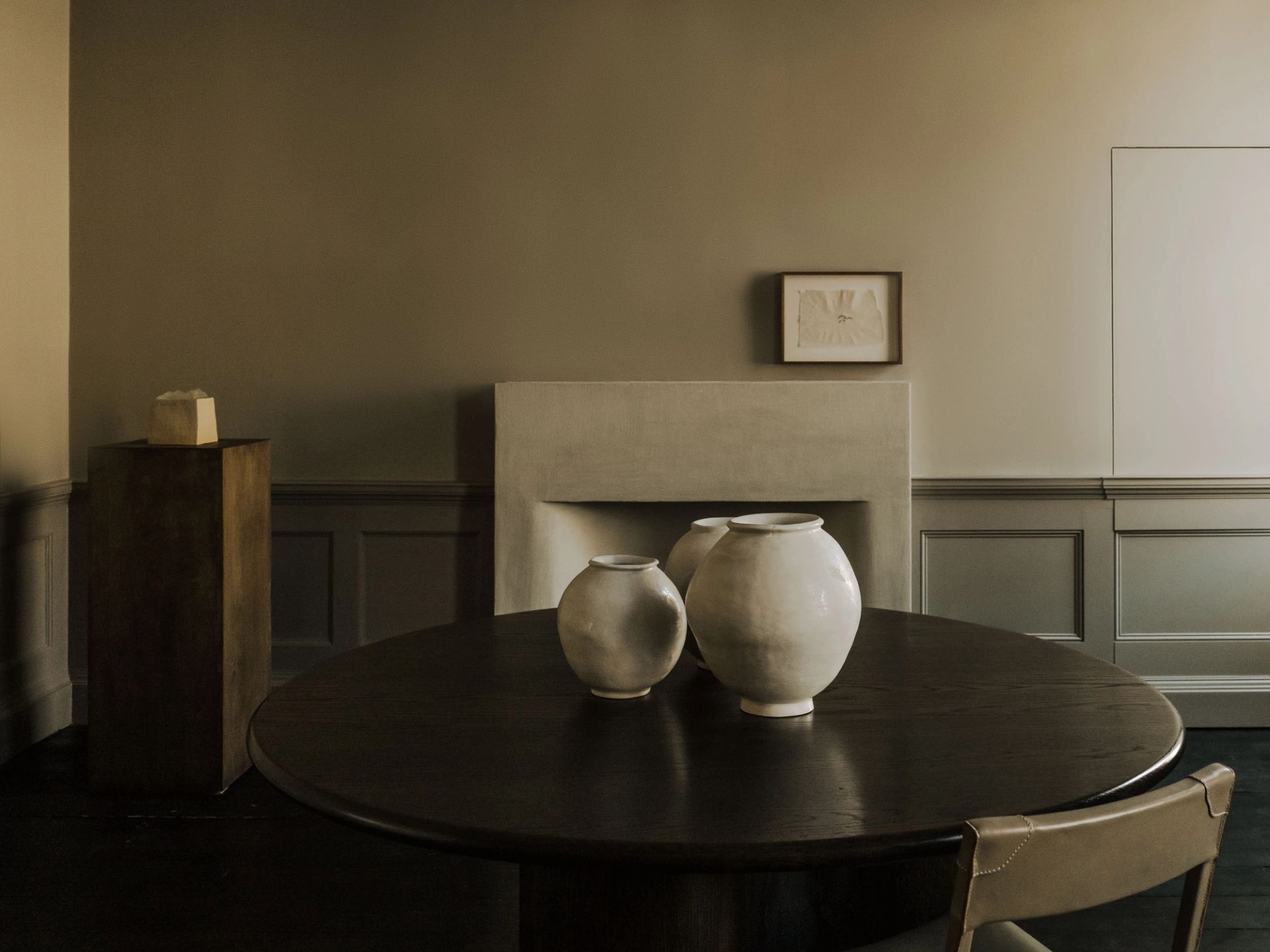Nancy Jiseon Kwon
Nancy Jiseon Kwon creates ceramics, textiles and works in glass that are rooted in tradition and ritual. From ancient Korean stoneware and hemp burial gowns, to Etruscan votive offerings and Neolithic petroglyphs, her pieces are informed by a long tradition of ceremonial objects created from organic materials. “My process often begins with extensive research into historic artefacts,” she says. “Part of that is to do with my Korean heritage; my practice has allowed me to learn more about the history behind the objects and rituals I grew up with. But I’m also interested in how different parts of the world became fixated with similar things, like Neolithic petroglyphs. I want to play a part in the creation of these objects, and become a part of that history. It helps me to look at myself from a distance – myself beyond my life in this body.”
Kwon’s practice has expanded to encompass experimenting in materials other than clay, including glass. She also experiments with the traditional Korean textiles of ramie and hemp, known as mosi and sambe. “These textiles interest me because they are both derived from plant fibres, so truly reflect the soil quality, climate, and conditions of where they come from,” she says. “I am drawn to the lightweight, transparent quality of ramie for the way it interacts with light. And hemp is culturally significant to me because it has a history in Korea of being used for burial dress for the deceased, as well as for mourning clothes. I am drawn to the painstaking process inherent in working with handwoven textiles – the labour that is present in the art.”
Kwon studied film at the Pratt Institute in New York, and media design at Art Center College of Design in Pasadena, California. She now lives in LA, where she works from her home studio. She begins each day by drawing rough sketches on newsprint fixed to the wall, which she refers to as she proceeds in clay, welcoming divergences from the original sketches into the process. She mostly favours working with a coarse clay body for the freedom it offers to create larger builds and unusual shapes. Her pieces are often unglazed, with layers of slip creating subtle variations in the surface. She has held solo and group shows in LA, including Built In – a group show held at the Neutra VDL House – as well as a solo exhibition at Stroll Garden.
I'm interested in how different parts of the world became fixated with similar things, like Neolithic petroglyphs. I want to play a part in the creation of these objects, and become a part of that history. It helps me to look at myself from a distance – myself beyond my life in this body.

Featured works



 LA Gallery
LA GalleryNancy Jiseon KwonInfinite Sky, 2024

 LA Gallery
LA GalleryNancy Jiseon KwonLandscape, 2024

 LA Gallery
LA GalleryNancy Jiseon KwonIn you, the earth, 2024

 LA Gallery
LA GalleryNancy Jiseon KwonConception Dream, 2024

 LA Gallery
LA GalleryNancy Jiseon KwonThere is nothing, 2024



 LA Gallery
LA GalleryNancy Jiseon KwonFragments 001, 2024
Related
- 05.23.24
New Collection — Nancy Kwon
Read moreOld Bablyonian omen texts reveal that ancient Mesopotamians observed the behavior of birds, weather patterns and other details of everyday life to predict the future. The tradition of divination in Korea involved practices including silk reading, rain-making rituals and offerings to birds, ancestors and deities. We are a species preoccupied with foretelling the future, and I think it arises from our need for safety and survival. I think about my grandparents and how they were displaced from their homes through war and how it must have put them in a constant state of fear, and how some of that anxiety must have passed down to me.
- 10.20.22
Clear with Rising Mist Playlist
Read moreNancy Jiseon Kwon has created a playlist to accompany her solo show, Clear with Rising Mist, at Francis Gallery Bath.
- 11.04.21
Gallery Representation of Nancy Kwon
Read moreNancy Kwon creates ceramics, textiles and works in glass that are rooted in tradition and ritual. From ancient Korean stoneware and hemp burial gowns, to Etruscan votive offerings and Neolithic petroglyphs, her pieces are informed by a long tradition of ceremonial objects created from organic materials. “My process often begins with extensive research into historic artefacts,” she says. “Part of that is to do with my Korean heritage; my practice has allowed me to learn more about the history behind the objects and rituals I grew up with. But I’m also interested in how different parts of the world became fixated with similar things, like Neolithic petroglyphs. I want to play a part in the creation of these objects, and become a part of that history. It helps me to look at myself from a distance – myself beyond my life in this body.”







